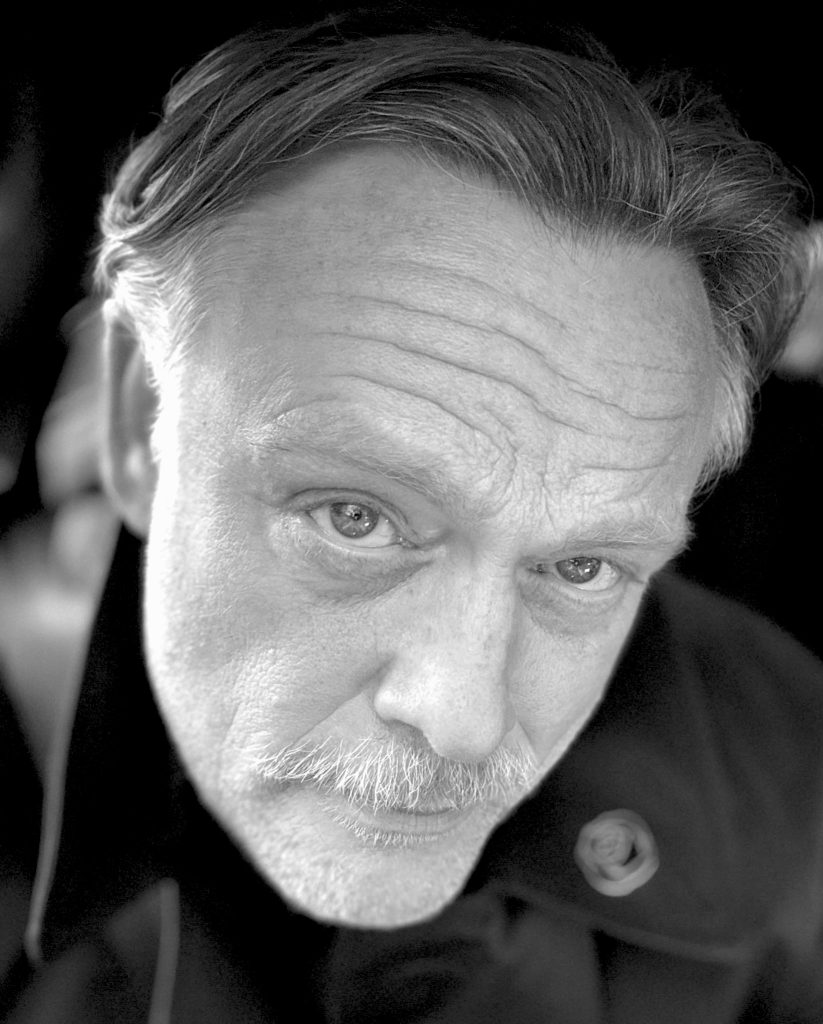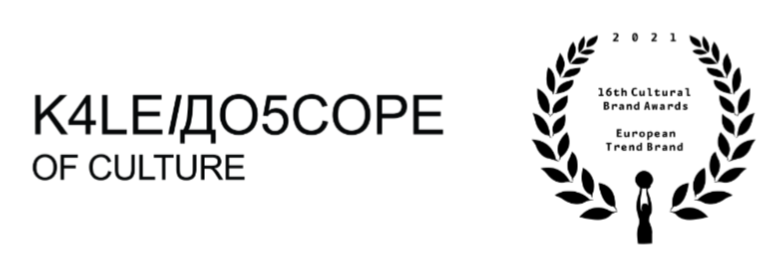In a world where the boundaries between art and technology are becoming increasingly blurred, few have managed to blend these two domains as skillfully as Andrew Melchior. Over his career spanning more than three decades, Melchior has collaborated with legendary artists like David Bowie, Björk, and Massive Attack, pushing the limits of creative expression through technological innovation. Known for his visionary approach, Melchior has become a sought-after speaker and creative force in the world of digital art.
This September, Novi Sad will have the honor of hosting the artist during the Applied Arts Week of the seventh Kaleidoscope of Culture. Melchior will conduct a workshop and give a lecture on 6 and 7 September in the Novi Sad District, where he will share his knowledge on innovations in creative media with participants. In anticipation of his arrival, we spoke with him about the relationship between art and technology, the challenges he faces in their integration, and the future of creative expression
You’ve worked with iconic artists like David Bowie, Björk, and Massive Attack. How do you approach integrating technology into their creative processes, and what have been some of your most memorable projects?
Working with artists like Björk, David Bowie, and Massive Attack has been both a privilege and a challenge, particularly when it comes to integrating technology into their already visionary creative processes. My approach is always collaboratively understanding the artist’s vision first and foremost, and then exploring how technology can amplify and enhance that vision without overshadowing it. One of my most memorable projects was with Björk on the “Stonemilker” VR experience for MoMA, where we sought to reimagine her music in a fully immersive environment. It was a delicate balance between respecting the original work and pushing the boundaries of what technology could do to bring it to life in a new and innovative way.
Your work often bridges the gap between art and technology. Can you discuss the impact of technological advancements on artistic expression, and how you see this relationship evolving in the future?
The relationship between art and technology has always been symbiotic, with each pushing the other to new heights. Technological advancements have democratised artistic expression, allowing more voices to be heard and more stories to be told in ways previously unimaginable. However, as we move forward, I see technology evolving from merely being a tool to becoming an intrinsic part of the creative process itself—where the lines between artist and technologist begin to blur.
In my recent work, particularly in my latest YouTube video for the track with my friend Timothy Morton ‘Come Fast From the Dark’, I’ve explored this evolving relationship by incorporating tools like Eleven Labs and Runway. Eleven Labs, with its advanced AI-driven voice synthesis, allowed me to create a narrative layer from a synthetic version of Tim’s voice that felt both authentic and otherworldly, adding depth and emotion to the piece. Meanwhile, Runway’s real-time video editing capabilities provided me with the flexibility to experiment and iterate in ways that traditional methods simply couldn’t accommodate such as adapting Banksy’s ‘Girl with a Red Balloon’. These tools didn’t just assist in the creation; they fundamentally shaped the artistic direction of the project.
The future of art will likely see more of these kinds of collaborations, challenging traditional notions of what art can be. AI, VR, and other emerging technologies are not just new mediums—they’re becoming the new canvas on which artists will paint. This shift will open up vast new possibilities for artistic expression, where the process itself is as much a part of the art as the final product. There will definitely be less friction between artistic vision and creative execution.
As a consultant for leading tech companies, what are some of the key innovations in media technology that excite you the most today, and how do you think they will shape the future of digital arts?
One of the most exciting innovations in media technology today is the development of real-time rendering and AI-driven content creation. These technologies are opening new possibilities for artists to create dynamic, responsive works that evolve in real-time based on viewer interaction or environmental factors. Another area that excites me is the advancement of haptic technology, which could fundamentally change how we experience digital art by adding a tactile dimension to what has traditionally been a visual medium. These innovations are likely to lead to new forms of artistic expression that are immersive, interactive, and multisensory, redefining the boundaries of digital art.

Kaleidoscope of Culture is a unique manifestation that celebrates five types of art during the five weeks of the programme—architecture, literature, applied, performing, and visual arts. What do you think of this concept?
The concept of the Kaleidoscope of Culture is both inspiring and timely for me. By celebrating different forms of art over five weeks, it allows for a deep dive into each discipline while also showing the interconnectedness of these various forms of expression. This approach mirrors how I view the relationship between art and technology—each form informs and enhances the other. The festival’s format encourages cross-disciplinary exploration and collaboration, which I believe is essential for the continued evolution of the arts in our increasingly interconnected world.
At the upcoming Kaleidoscope of Culture in Novi Sad, you’ll be leading a workshop on creative media innovations. What can participants expect to learn, and what are some of the key takeaways you hope to impart?
Participants in the workshop can expect to explore the cutting edge of creative media innovations, with a particular focus on how technology can be harnessed to tell stories in new and compelling ways. We’ll delve into practical techniques for integrating emerging technologies like VR, AR, and AI into artistic practice, and discuss the philosophical implications of these tools on the creative process. My key takeaway for participants is that while technology can greatly enhance artistic expression, it should always serve the story or emotion the artist wishes to convey, not the other way around.
What are some of the challenges you face when integrating technology with art, and how do you overcome them to create innovative experiences?
One of the primary challenges is ensuring that the technology serves the artistic vision rather than dictating it. It’s easy to get caught up in the possibilities of new tools and lose sight of the core message or emotion you’re trying to convey. I overcome this by always starting with the narrative or concept and then considering how technology can enhance that vision. Another challenge is the rapid pace of technological change, which can make it difficult to keep up. I tackle this by staying curious and continually experimenting with new tools, always with an eye towards how they can be used to push artistic boundaries.
Reflecting on your career that spans over three decades, what are some pivotal moments or decisions that have shaped your journey as an artist and innovator?
There have been several pivotal moments, but one that stands out is the decision to embrace digital technology such as MIDI and computer based audio sequencing and recording early in my career. This choice opened a whole new world of possibilities and led to collaborations with some of the most iconic artists of our time. Another key moment was the shift from working primarily in music to exploring other forms of digital art, such as VR and immersive installations. This broadened my understanding of what art could be and allowed me to push the boundaries of my own creativity. These decisions have shaped my journey by continually challenging me to evolve and adapt, which I believe is essential for any artist or innovator.
What is next in the life and career of Andrew Melchior?
Looking ahead, I’m excited to continue exploring the intersection of art and technology, particularly in how AI and immersive technologies can be used to create new forms of expression. I’m also keen to work on projects that challenge the traditional boundaries between different artistic disciplines, much like the Kaleidoscope of Culture does. Ultimately, my goal is to keep pushing the envelope, exploring new ideas, and collaborating with artists who share a passion for innovation and storytelling. The next chapter in my career will be about harnessing the potential of emerging technologies to create experiences that resonate on an emotional level, while also pushing the limits of what’s possible. Currently I’m working hard on my commission ‘The Logos’ for the EU Capital of Culture in Oulu, Finland which sees me using sonified Fast Radio Bursts and spatial audio and generative code to construct a unique scientific exploration of spirituality.
Authors: Marina Marić i Feđa Putnik
Photo: private archive

